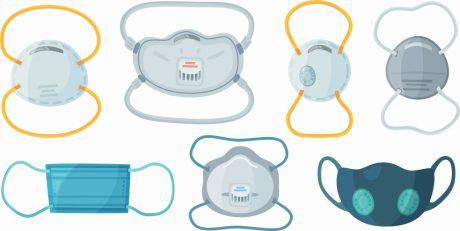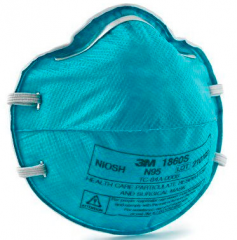

A mask can be either a disposable medical device (a “surgical” type mask) or personal protective equipment (a “respirator”), worn by caregivers and/or contagious patients. Depending on the type of mask, it protects against the transmission of infectious agents by “droplet” or “airborne” routes. Depending on the standard it meets and its protection class, it can prevent contamination by viruses such as coronavirus, SARS and H1N1.
How to choose a surgical mask or respirator?
|
Several criteria should be taken into account when choosing a mask such as application, type of mask, level of protection required, etc.
|
 |
Why choose a surgical mask?
|
A medical or surgical mask is a disposable medical device. It protects against infectious agents transmitted by “droplets.” However, it does not protect against “airborne” infectious agents. It will therefore not prevent the wearer from being potentially contaminated by a virus. A surgical mask does two things:
“Surgical” masks can be used in different fields:
|
 |
Why choose a respirator?
|
A respirator is a type of personal protective equipment. It prevents the wearer from inhaling aerosols (dust, smoke, mist) as well as vapors or gases (disinfectants, anesthetic gases) that are health hazards. It also protects the wearer from airborne infectious agents i.e. against contamination by a virus such as coronavirus, SARS, H1N1, etc. Respirators are divided into two categories: insulating (which are not covered in this buying guide) and filtering. Filtering respirators consist of a facepiece and a filtering device. Sometimes the filter element is integrated into the facepiece. Depending on the type of filter, the mask will either be effective only against particles, only against certain gases and vapors, or against particles, gases and vapors. Filtering respirators can sometimes also be equipped with an exhalation valve to improve user comfort. The valve prevents condensation inside the mask, misting on the glasses and helps the user breathe in and out easily. It should be noted that respirators also protect those who wear them from inhaling “droplets” of infectious agents.
|
 |
What are the standards that must be respected for masks?
|
Each of these two types of masks are subject to different standards and regulations depending on the country or geographical area.
|
Surgical Masks:
Respirators:
|
Which surgical masks or respirators protect against contagious diseases and viruses?
|
In the presence of patients with contagious diseases or dangerous viruses, caregivers must be equipped with a suitable type of mask with a sufficient level of protection. Let’s take the cases of tuberculosis, coronavirus, SARS, H1N1 and the risks of bioterrorism.
|
 |
Should a disposable or reusable mask be used?
|
Honeywell respirator with removable filters The surgical mask is a disposable medical device that must be disposed of in the appropriate manner after use. Respirators can be disposable or reusable. In the second case, it is possible to replace the filter when it is full. The effective life of a surgical mask or a respirator is indicated by the manufacturer. It varies according to use. Generally speaking, it can range from three to eight hours depending on the concentration of the contaminant and a series of external factors such as air humidity, temperature, volume of air breathed in, etc. For respirators equipped with gas filters, if the wearer begins to perceive the smell of gas, he or she must immediately leave the work area and replace the filter. Similarly in the case of dust filters, if the wearer begins to perceive an increase in inspiratory effort, he or she should leave the premises and replace the filter. These masks are mainly worn by people working in contact with chemicals or by firefighters. |
 |
How to use a mask?
|
Certain precautions should be taken when fitting a surgical mask or respirator. These are the main ones:
|
 |





